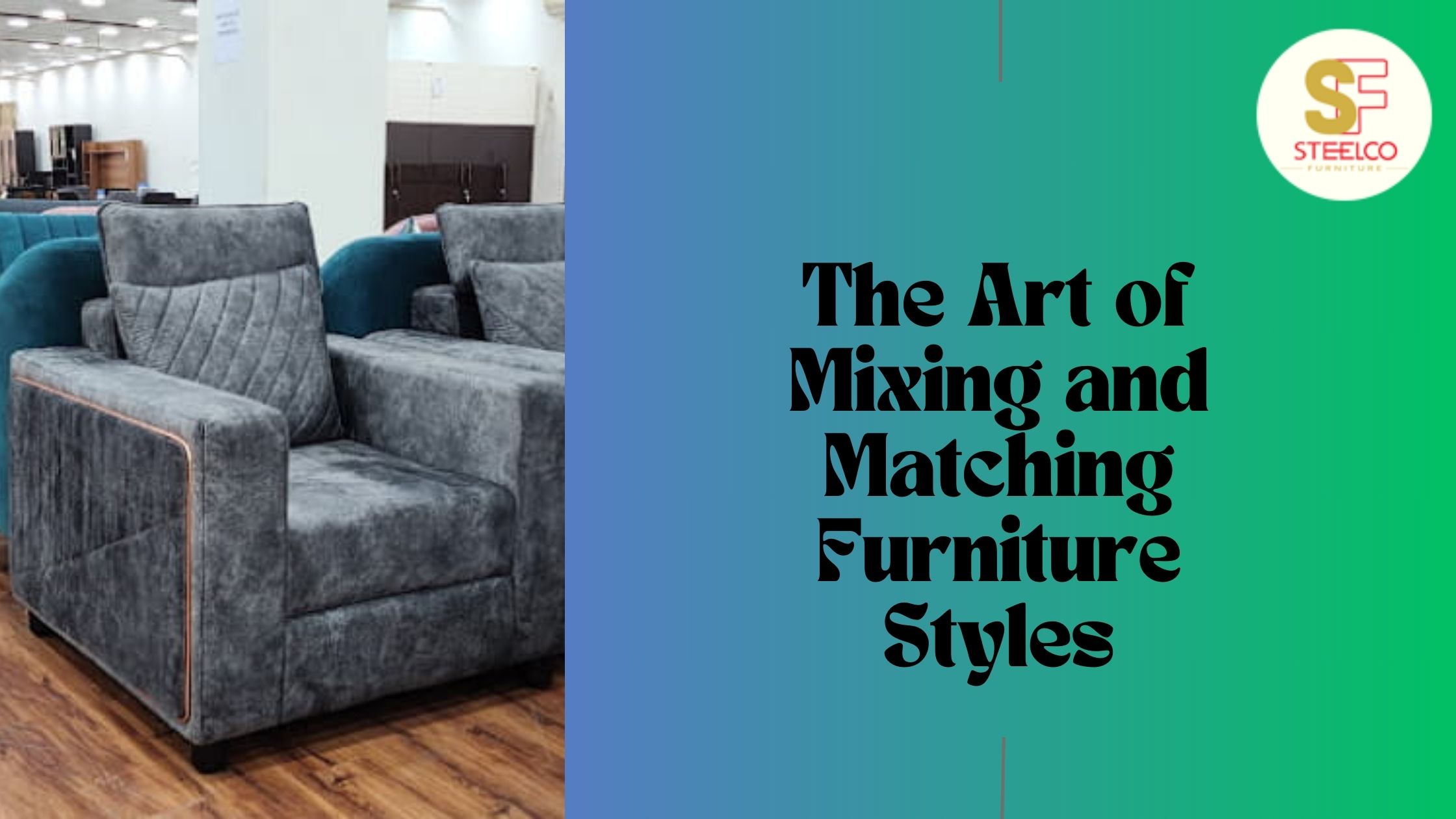18, Rabindra Sarani, Ground & 1st floor, Kolkata 700 001
Blog Details

The Art of Mixing and Matching Furniture Styles
Introduction: Furniture plays a pivotal role in defining the personality and character of your living spaces. The art of mixing and matching different furniture styles can be both challenging and rewarding. When done right, it can infuse your home with a unique and eclectic charm that reflects your individuality. In this blog post, we'll explore the principles and tips for successfully combining various furniture styles to create a harmonious and visually appealing interior.
Understanding Furniture Styles: Begin by familiarizing yourself with different furniture styles. Some popular ones include:
- Traditional: Known for its timeless elegance and classic designs.
- Modern: Emphasizes clean lines, minimalism, and functionality.
- Rustic: Celebrates natural materials and a cozy, country-inspired feel.
- Mid-Century Modern: Features iconic designs from the mid-20th century.
- Bohemian: Embraces an eclectic mix of patterns, colors, and textures.
Define Your Style: Before you start mixing and matching, identify your personal style preferences. Knowing whether you lean toward contemporary, vintage, or a fusion of styles will help guide your choices.
Create a Cohesive Color Palette: Choose a color scheme that unifies your furniture pieces. A harmonious color palette can tie together diverse styles and make them feel more cohesive.
Choose a Dominant Style: Select one dominant furniture style as your anchor. This will serve as the foundation for your design and provide a clear direction for your choices.
Mix Key Pieces: Introduce one or two statement pieces from another style to add interest and contrast. These standout pieces can become conversation starters and focal points in your room.
Balance Shapes and Proportions: Consider the shapes and proportions of your furniture items. A mix of different shapes (e.g., round, square, and rectangular) can add visual interest, but ensure they are balanced to avoid a cluttered look.
Use Accessories Wisely: Accessories, like throw pillows, rugs, and artwork, can bridge the gap between contrasting furniture styles. Opt for accessories that complement both your dominant style and your eclectic additions.
Experiment with Textures: Textures can play a significant role in harmonizing diverse furniture. Incorporate different textures such as leather, wood, fabric, and metal to add depth and tactile interest.
Embrace Open Space: Don't overcrowd your room with furniture. Leave enough open space to let each piece shine and maintain a sense of balance.
Trust Your Instincts: Ultimately, the art of mixing and matching furniture styles is a creative endeavor. Trust your instincts and experiment until you achieve a look that feels right for you and your space.
Conclusion: Mixing and matching furniture styles can be a fun and fulfilling way to create a unique and inviting home. By understanding the fundamentals of design, defining your style, and following these tips, you can achieve a harmonious and visually pleasing interior that reflects your personality and creativity. So, don't be afraid to explore and experiment with different furniture styles to craft a living space that truly feels like home.



